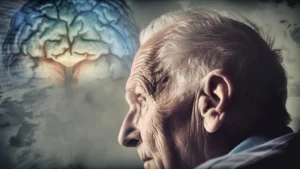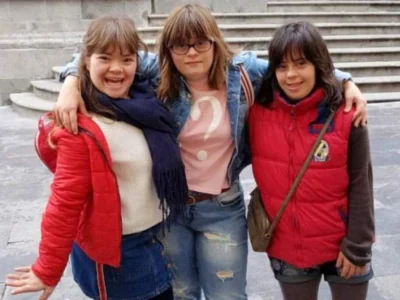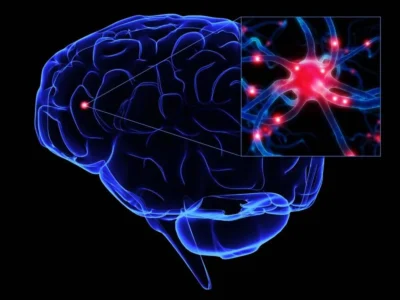Manuel Cassinello Marco, psychiatrist specializing in neuropsychiatry and psychologist, explains to us in this article how frontotemporal dementia affects people.
Although when we think of dementia we usually think of Alzheimer’s disease, the truth is that there are many other types of neurodegenerative conditions. These share a progressive atrophy in different parts of the brain. Among these we can find frontotemporal dementia. It is important to recognize the symptoms in order to consult professionals who can begin rehabilitative treatment as soon as possible.
Degeneration and frontotemporal dementia
Frontotemporal dementia or Pick’s disease refers to a clinical syndrome in which the predominant presentation consists of a change in personality associated with behavioral changes, language disturbances and cognitive decline. However, it is important to differentiate it from frontotemporal degeneration. The latter only refers to the existence of atrophy limited to the prefrontal and anterior temporal lobes. That is, there can be atrophy without an associated dementia syndrome.
Frontotemporal dementia, also known as Pick’s disease, is named after its discoverer, Arnold Pick, and refers to the presence of the so-called Pick bodies which are groups of damaged neurons due to the deposition and inability to eliminate the so-called tau protein and is associated with a phenomenon known as gliosis, which leaves a lesion similar to a scar.
Symptoms of frontotemporal dementia
When we refer to frontotemporal dementia it is important to point out that we are not referring to a single clinical picture but to different entities that share common lesions whose clinical manifestation can vary. Therefore, in this section, we must make a distinction between the three main clinical variants: behavioral variant frontotemporal dementia, nonfluent progressive aphasia and semantic dementia.
- Behavioral variant: This is the most common variant and typical symptoms are:
- Behavioral changes,
- changes in personality,
- apathy (this presentation should be approached with caution, as it is often confused with a depressive disorder),
- disinhibition,
- inappropriate behaviors,
- poor judgment,
- eating disturbances such as ingesting non-nutritive substances (spoiled food, for example),
- neglect of hygiene and personal care,
- rigidity in their behaviors,
- irritability.
- Nonfluent progressive aphasia: Its symptoms include:
- Anomia or difficulty finding words or naming objects (this would be the fundamental symptom),
- inappropriate use of verb tenses,
- alteration in word order,
- broader grammatical errors,
- mutism (this would be the final symptom in the evolution of this variant).
- Semantic dementia: In this last form, the person usually has:
- Problems understanding both what they read and what they hear,
- difficulty naming objects or even describing them,
- greater preservation of autobiographical memory and events, being striking how, despite having limited comprehension, they seem able to have a normal conversation. However, if we analyze it, this conversation “is empty” of information.
Stages of frontotemporal dementia
Although the course of all variants is progressive, with occasional deteriorations due to complications such as infections, in practical terms I would distinguish two phases:
- Phase 1 or presymptomatic phase: In this phase we would not find the typical symptoms of the different forms of presentation. However, we might find some symptoms such as apathy, disinterest or attentional problems. At this stage, although the family begins to notice unusual situations they may not give them much importance if there is no family history.
- Phase 2 or symptomatic phase: In this phase the most common symptoms within each of the variants begin to manifest. The progression in years, as well as the number of symptoms and their intensity, varies greatly from person to person and depends, among other factors, on the occurrence of complications such as hospital admissions, urinary infections, decompensation of other conditions, changes of residence, etc. It is common in this phase to observe an increasingly greater dependence on caregivers and family members.
Causes of frontotemporal dementia
As we noted earlier, when we talk about dementia it is common to think of Alzheimer’s disease. However, frontotemporal dementia accounts for approximately 5 to 10% of all dementias, this percentage increasing to just over 20% when the condition begins before the age of 65. Like Alzheimer’s, its course is chronic and progressive.
Frontotemporal dementia has a strong genetic component and, in up to 50% of cases, there is a family history of frontotemporal dementia, psychiatric disorders or ALS. It occurs equally in both sexes and has been associated with several genes: PGRN (progranulin gene) and MAPT (microtubule-associated tau protein), both located on chromosome 17q21. This means that frontotemporal dementia is hereditary in a high percentage of cases.

Subscribe
to our
Newsletter
Diagnosis of frontotemporal dementia
As with other dementias, the diagnosis is clinical and requires carrying out a series of tests such as:
- Blood tests including vitamin B12, folic acid, thyroid hormones and, in general, all parameters that allow us to differentiate it from a reversible cause of dementia.
- Cerebrospinal fluid study where we will analyze tau protein levels to differentiate this dementia from Alzheimer’s-type dementia.
- Neuroimaging studies such as an anatomical and functional brain magnetic resonance where we will see atrophy in both frontal lobes and reduced activity in them. Sometimes we can also observe atrophy in the temporal lobes. It should be known that, since this is not a homogeneous condition, as there are 3 different forms, findings on neuroimaging may vary from person to person, as well as from one clinical form to another.
Treatment of frontotemporal dementia
Unfortunately, to date there is no curative treatment for frontotemporal dementia; treatment is symptomatic. In this regard, the treatments available are:
- Antidepressants: Preferably those known as first-line or serotonergic agents since, due to the area where atrophy is found, there is a greater serotonin deficit that can benefit from these treatments.
- Trazodone: It is an atypical antidepressant used to manage behavioral disturbances and is well tolerated.
- Antipsychotics: At low doses they help improve irritability, behavioral disturbances, possible psychotic symptoms that may appear and insomnia.
- Regarding acetylcholinesterase inhibitors or memantine, commonly used in Alzheimer’s, there is no clear evidence to recommend their use in patients with frontotemporal dementia.
- Cognitive rehabilitation: Today there are numerous cognitive rehabilitation programs that, although they do not modify the course of the disease, do allow a notable improvement in patients’ quality of life by providing guided training by professionals for the deficits that appear.
Regarding life expectancy, the truth is that the range of years is very wide. Usually, it is between two and ten years after diagnosis.
Therefore it is essential to carry out a good multidisciplinary approach involving neurologists, occupational therapists, speech therapists, neuropsychiatrists and neuropsychologists. The combination of all these professionals aims to provide good treatment, both pharmacological and rehabilitative, to improve the quality of life not only of the patient but also of their caregivers.
Bibliography
- Treatise of Neuropsychogeriatrics.
- Neuropsychology by Javier Tirapu Ustárroz, Marcos Ríos Lago and Fernando Maestú Unturbe.
- Introduction to Psychopathology and Psychiatry by J. Vallejo.
- Alzheimer’s Disease and Other Dementias by R. Alberca and S. López-Pouda.
- Geriatric Psychiatry by Agüera, Martín and Sánchez.
If you liked this article about frontotemporal dementia, you will likely be interested in these NeuronUP articles:
“This article has been translated. Link to the original article in Spanish:”
¿Qué es y cómo afecta la demencia frontotemporal?







 Worksheet to develop working memory and spatial relation in adults: Position Change
Worksheet to develop working memory and spatial relation in adults: Position Change
Leave a Reply